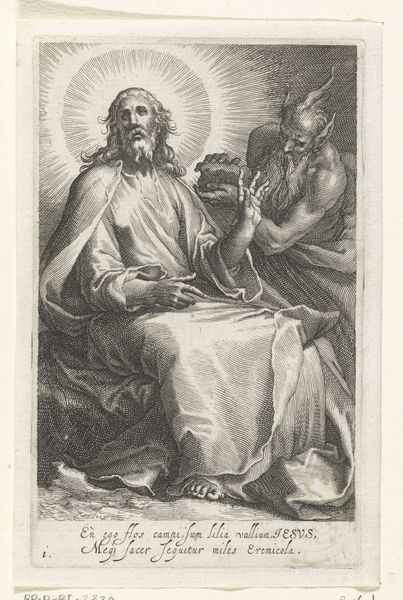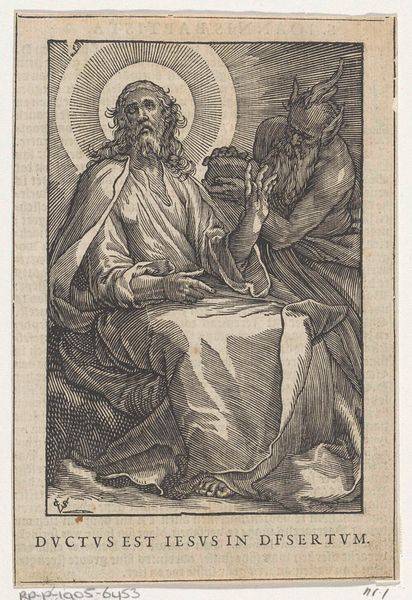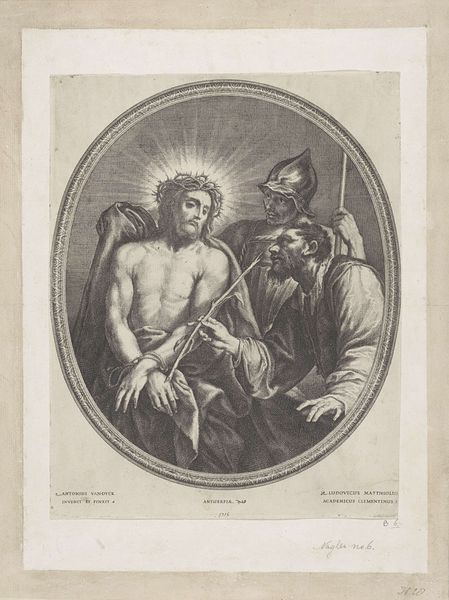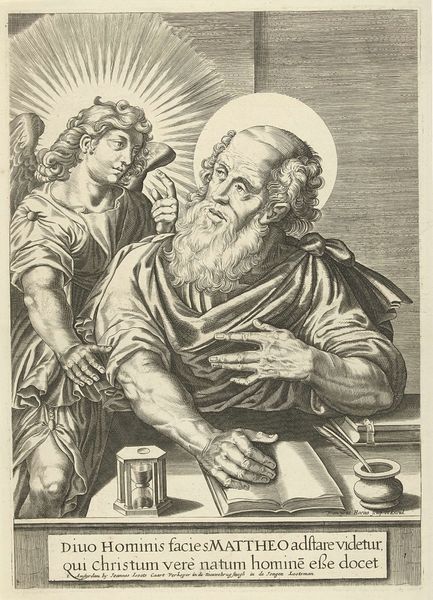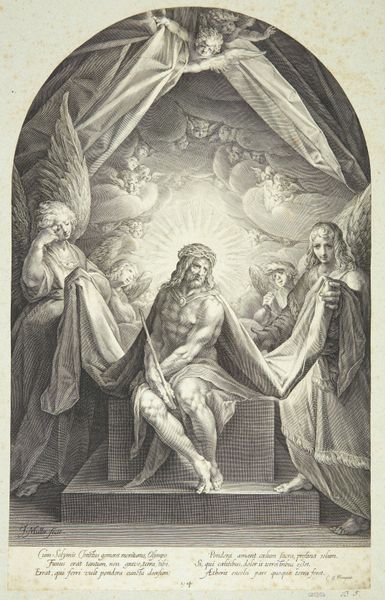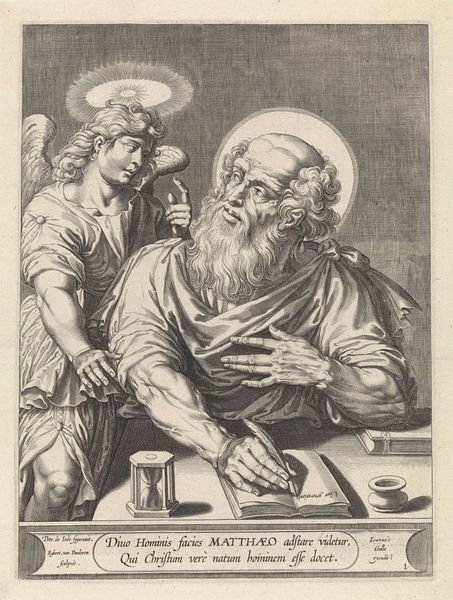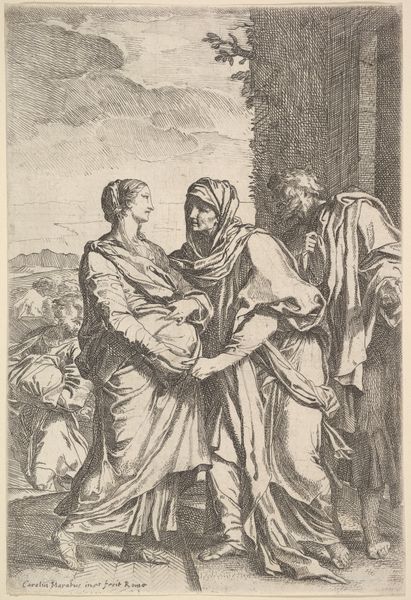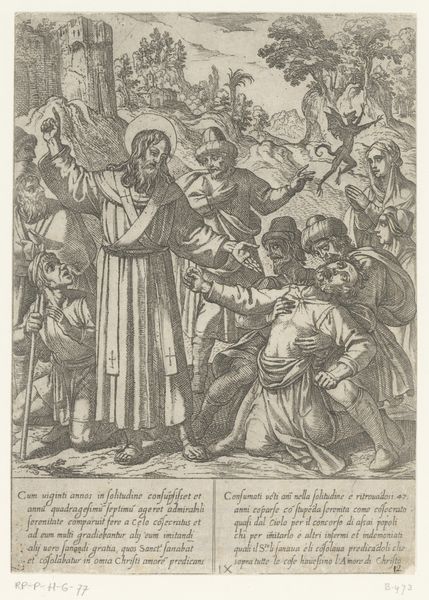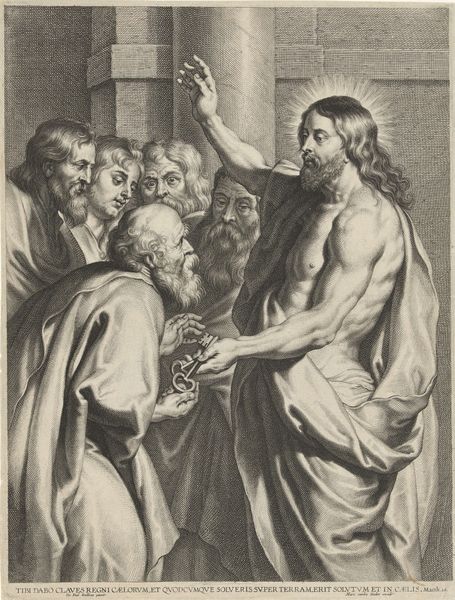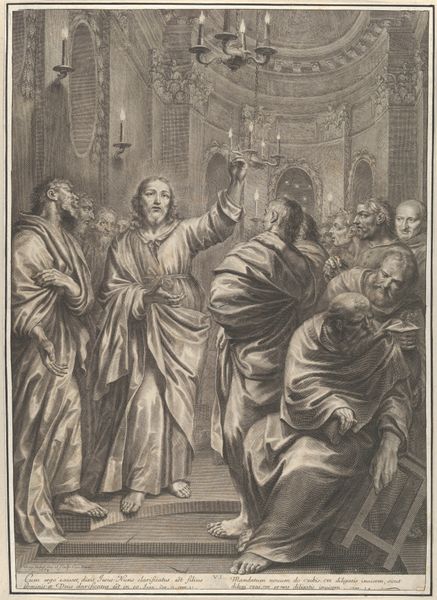
The Tribute Money: two Pharisees, one holding out a coin in his right hand, approach Christ from the left 1560 - 1568
0:00
0:00
drawing, print, engraving
#
portrait
#
drawing
# print
#
old engraving style
#
figuration
#
personal sketchbook
#
portrait reference
#
men
#
portrait drawing
#
genre-painting
#
history-painting
#
coin
#
italian-renaissance
#
engraving
#
christ
Dimensions: sheet: 10 15/16 x 9 1/4 in. (27.8 x 23.5 cm)
Copyright: Public Domain
Editor: Martino Rota's "The Tribute Money," made between 1560 and 1568. It's an engraving, a print. The detail is striking, especially the rendering of the faces and textures. The coin, a small detail, is central. What do you see when you look at this piece? Curator: For me, it's about labor and materiality. Look at the process of creating an engraving. Each line, etched by hand, contributes to the image. Consider the engraver, Rota; he is translating someone else's design (Titian’s), making this also about modes of production. How does that distance impact our viewing of the narrative itself? Editor: So, you're less interested in the religious narrative itself and more in how it was physically produced and the labor involved? Curator: Exactly. The religious element becomes another material to be worked with, almost like the copper plate itself. What's fascinating is the tension between the supposedly elevated subject matter and the very earthly process of its creation and consumption. Was this print intended for mass consumption or a wealthy elite? Its materiality and availability speak volumes about the spread of ideas and artistic trends. Editor: That makes me think about the accessibility of religious imagery at the time. Was it a democratizing force, or simply another commodity? Curator: An interesting point! The print's materiality underscores this tension: religious iconography was now reproducible, potentially shifting power dynamics by changing consumption habits and expanding visual culture. The coin becomes not just a symbol but a tangible object, multiplied through printmaking, and enters the marketplace. Editor: So, you're suggesting that the value lies not just in the subject matter, but in the socio-economic implications of its production? Curator: Precisely. This lens redirects our focus from divine narrative to earthly realities—the material conditions that shape art and its reception. Editor: That’s given me a whole new way to think about prints like this. Curator: Hopefully it will change how you view all art by questioning what its production tells us.
Comments
No comments
Be the first to comment and join the conversation on the ultimate creative platform.
